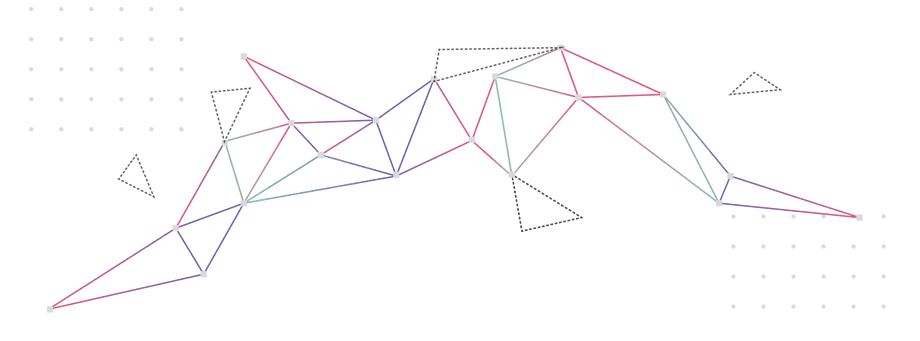Tech industry trendscopy link
A theory of where the tech industry is headed next
introductioncopy link
I finished a series of books about the lifecycle of the first industrial revolution by authors who thoroughly analyzed the underlying factors and have new insights to share about the pattern that emerges.
Let’s begin by setting up a basic framework for understanding change:
/**/ The history of change in systems is best visualized as a sine wave, with periodic “ups” and “downs” over time.
Every period of success and prosperity is followed by instability when the environment conditions change. The system struggles to adjust to the new conditions, and finally stabilizes. Once stabilization is achieved, optimization takes over for the remainder of the cycle until another large change occurs.
past challengescopy link
In The Decline of the West, Oswald Spengler covers the beginning and middle of the industrial revolution.
At first success was defined as the ability to scale production by leveraging force amplification. Businesses that could produce the most products or service the most customers won.
When business owners saw an opportunity to produce cheaper abroad, they taught their manufacturing techniques to then-developing countries. This became their undoing according to Spengler.
/**/ The Western industry largely responsible for propping up the economies of the participating countries has collapsed and was overrun by competition from the same countries where their manufacturing was relocated.
the old modelcopy link
The Toyota Way by Jeffrey Liker offers lessons about the middle of the industrial revolution. At that time, success no longer meant the ability to scale production, since all the players have achieved the same scale. The new definition of success was efficiency.
First, the profession of the Industrial Engineer was born. While industrial engineers were busy re-arranging the layout of production plants and inventing the conveyor belt to reduce the energy wasted on moving parts through the production process, the production line Managers and Team Leads were busy aligning every team member to shared goals and organizing all activities to ensure that every ounce of effort was spent on high-leverage improvements to overall value delivery.
Agile project management now in wide-spread use in the tech industry has its roots in the Lean Manufacturing Process pioneered by Toyota and evangelized by the Ford Motor Company in its joint venture with Toyota.
the new modelcopy link
The subsequent collapse of the industry due to global competition and the challenges of recovery are presented by Adam Davidson in The Passion Economy and Andy Grove in Only the Paranoid Survive.
/**/ On the down-stroke of the industrial revolution, many businesses were searching for a way to survive in the globalized market.
They discovered that the new definition of success meant designing unique products that closely addressed customer needs, rather than producing generic products at grand scales and with high efficiency.
Generating unique designs requires creativity, and iterative development requires quick and agile execution.
The need for creative solutions and fast decision-making has made traditional command-and-control structures obsolete.
/**/ The volume of information that would have to travel up to the decision-makers in order to make the right decision, coupled with the speed required to ensure the decision would be relevant by the time it travels back down, has rendered centralized decision-making impossible.
the new challengecopy link
The principal challenge faced by the tech industry today is transitioning from centralized to distributed decision-making.
The focus is on evolving the top layers of the organizational structure to drive management inefficiencies down to zero, the way production inefficiencies have been optimized half a century before.
- Engineers will often understand how to improve the product or processes on the team but must spend valuable focus time pushing this information up to the decision makers, who may have at one point understood how the “work in the trenches” was done but have gotten too detached from reality after being promoted.
- Communicating technical details in an accessible manner requires including all of the prerequisites needed to establish a shared context and vocabulary, in addition to convincing decision-makers that mental models they have internalized over the years no longer match reality.
- Once the outer shells of technical accessibility, context, and outdated mental models have been penetrated, there remains a challenge of fighting through the forces of ego. For example in Only the Paranoid Survive, the ex-CEO of Intel talks about the challenge of sensing change in the operating environment through multiple layers of management.
Communicating at the higher levels of the organization is a complex diplomatic exercise:
- Information must be force-fed by utilizing unobtrusive sales techniques, such as convincing a recipient that a certain idea is their own, masquerading it as something they already agree with, or appealing to someone they trust.
- Critical insights are frequently re-shaped beyond the point of being useful and the resulting decisions are disharmonious with reality.
predictionscopy link
In closing, I will extrapolate some predictions based on the above model.
First, management skills will soon be the primary requirement for most jobs: technical knowledge alone will no longer be useful.
Candidates will need to cultivate sophisticated understanding of their unique value proposition and the lens through which they view the world.
Skills that were previously in the realm of high-level executive roles and often boasted as the “millionaire mindset” will become commonplace.
Once each employee bears the responsibility of managing their own time and owning their efficiency, mental health and fitness will become an important metric for performance evaluation.
Candidates that haven’t learned how to self-regulate and stay calm through challenging or emotionally charged situations will have to build their mental fitness and emotional intelligence in order to stay relevant.

